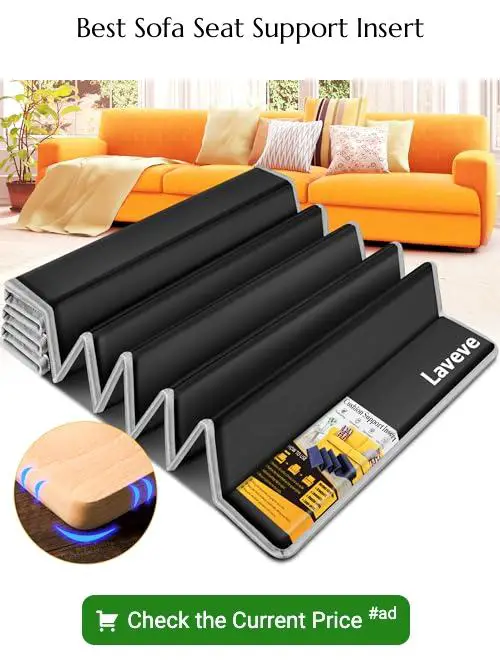Last updated on
Preserving the sturdiness of your sofa seat is crucial because it contributes significantly to your overall comfort and home appeal.
“I’m proud to have penned this article and crafted these unique designs on Sofa Seat Support Saver Ideas, and I hope they inspire you and bring as much joy to your day as they did to mine while creating them.”
A sagging sofa can disrupt the aesthetic harmony of your living space, not to mention the discomfort it brings. But worry not, this article will guide you through several effective sofa seat support saver ideas. From using plywood or a specialized seat saver to replacing the old cushions, there are numerous ways to revive your beloved sofa.
Whether you’re a DIY enthusiast or prefer ready-made solutions, there’s a method that will suit your preference and budget. Read on to explore these ideas in detail and breathe new life into your sagging sofa.
Table of Contents
Using Plywood Support Plates

Plywood plates are renowned for their robustness and feasibility, making them an ideal solution. This method only requires a plywood sheet that matches the sofa’s size. With a few simple steps, a sagging couch is no more.
1. Measurement: Measure the area that needs support. Ensure precision as it directly affects your comfort.
2. Cut and Place: Cut the plywood according to the obtained measures. Place it beneath the cushions. The weight of the cushions compresses the plywood, providing extra support for your sofa.
3. Comfort Adjustment: Initially, you might feel a firmness; it’s normal. The cushioning will slowly mold around the plywood, ending up more comfortable than ever.
4. Durability: Plywood is highly durable, thus it prolongs the life expectancy of your sagging sofa.
Remember, plywood does not damage your sofa fabrics or cushions, thanks to its smooth edges. This simple technique is certainly a quick fix that can bring a significant difference to your sofa’s lifespan and comfort.
Installing Additional Foam Padding
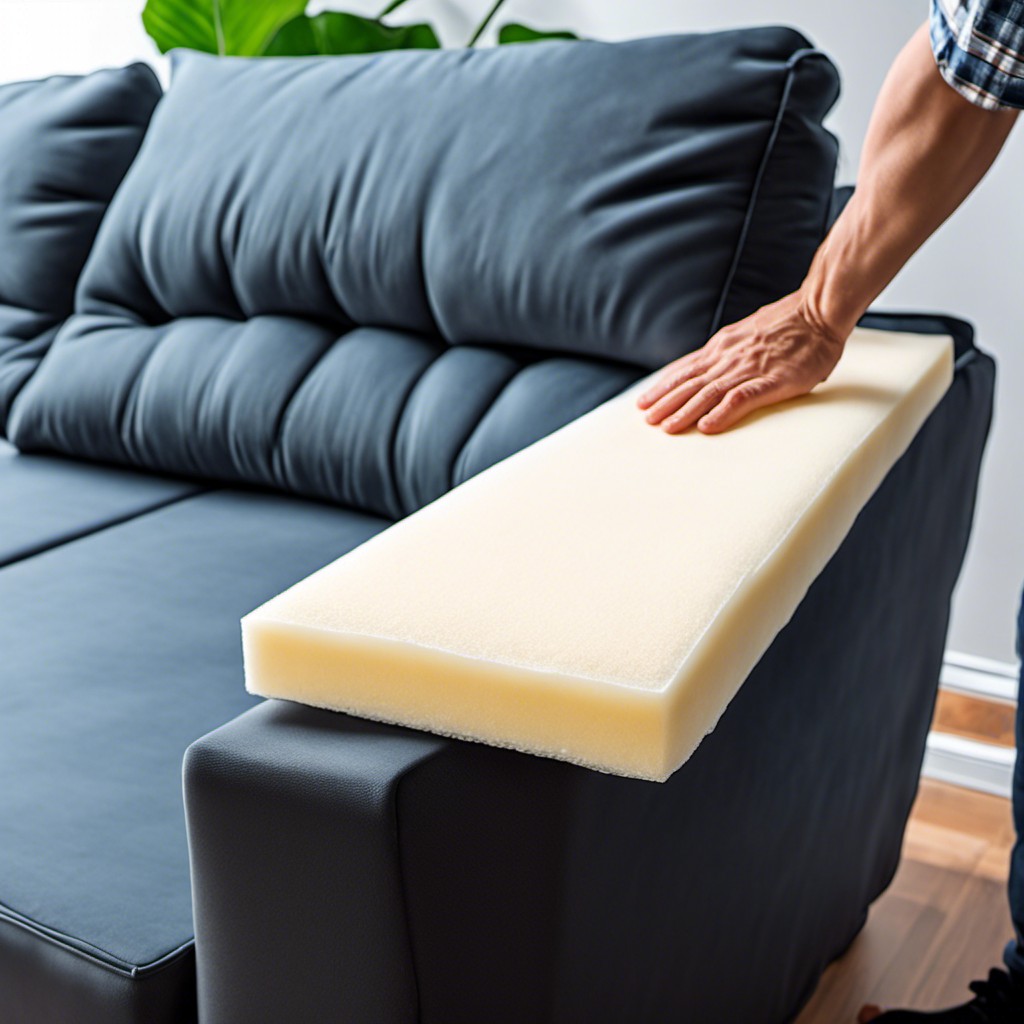
As a quick solution to saggy sofa seats, foam padding comes in handy. It’s important to select the right foam type for optimum durability and resilience. High-density foam typically offers the most support and longevity.
To install the foam padding, remove the sofa cushions first. Measure the existing padding and use those measurements to cut the new foam to an appropriate size. In most cases, it’s advisable to keep the old padding as it may provide additional support for the new foam. But if it’s really worn out, you may replace it completely.
Position the new foam squarely on the seat platform, ensuring all corners align perfectly. Then, replace the cushions, ensuring they firmly press against the new padding. Remember, the foam padding might initially feel a bit tight but will eventually conform to the shape of the cushions.
And voila! Your sofa is transformed, saving the day from saggy, uncomfortable seating.
Adding Flexible Slats for Support
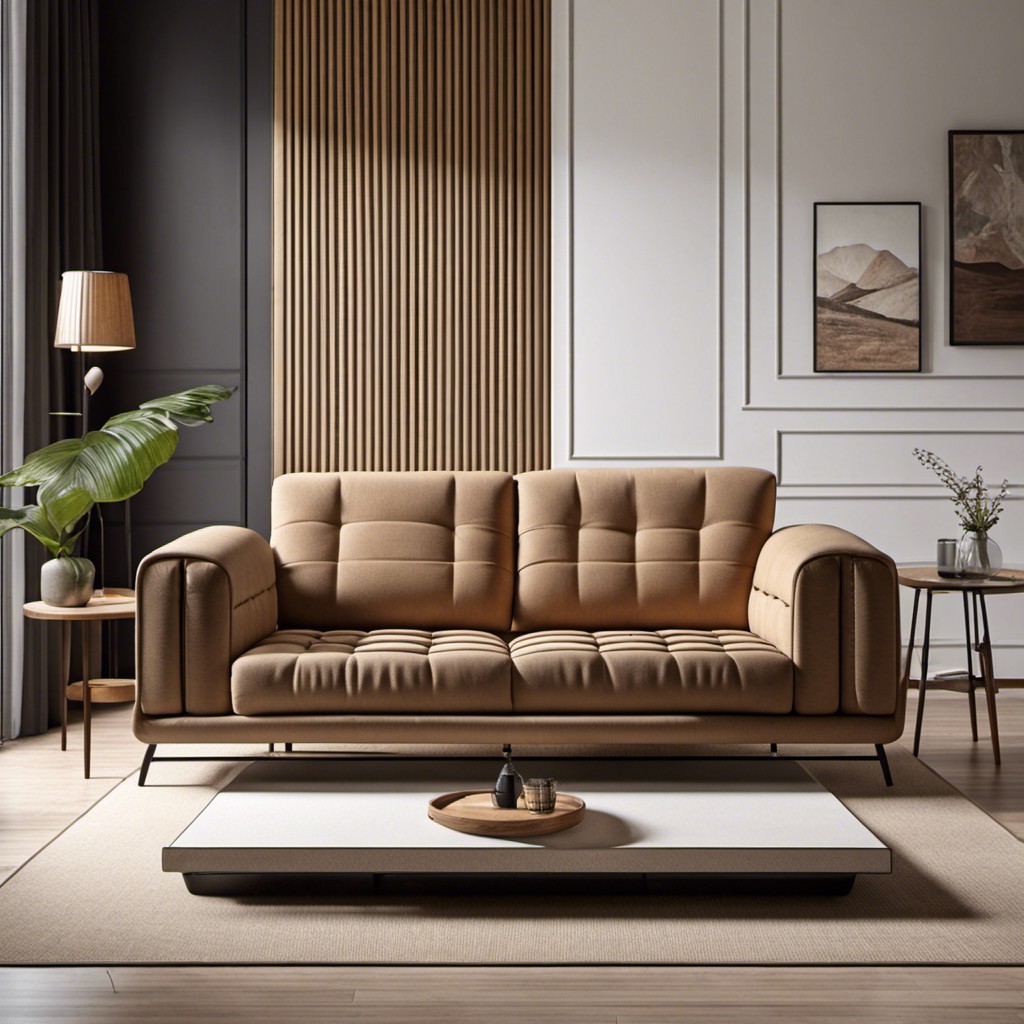
Flexible slats, often used in bed bases, provide excellent support due to their unique ability to distribute weight evenly. Their flexible nature allows for customization to your comfort needs, ensuring a personalized seating experience.
To enhance your sofa, follow these steps:
- Measure your sofa’s dimensions: Note both the width and length.
Purchase quality flexible slats: They usually consist of thin strips of wood or metal affixed together in such a way that they can be rolled up for ease of transport.
Cut slats to size: If they do not fit precisely with your sofa dimensions, use a saw to trim them to your desired size.
Secure slats on the sofa: Place them under the cushions. You may want to attach adhesive Velcro strips to avoid shifts.
Test the comfort: Sit on your renovated sofa and feel the change. Now, your sofa is less likely to sag, offering improved overall longevity.
Note: This method is not ideal for sofas with gaps or holes in the structure. It works best with sofas that have a solid base beneath the cushions.
Always remember – maintaining a pleasurable seating experience can be a simple DIY task and does not always require a full sofa replacement, so do try these steps and give your old sofa a new lease on life.
Replacing Factory-made Cushions With High-quality Foam
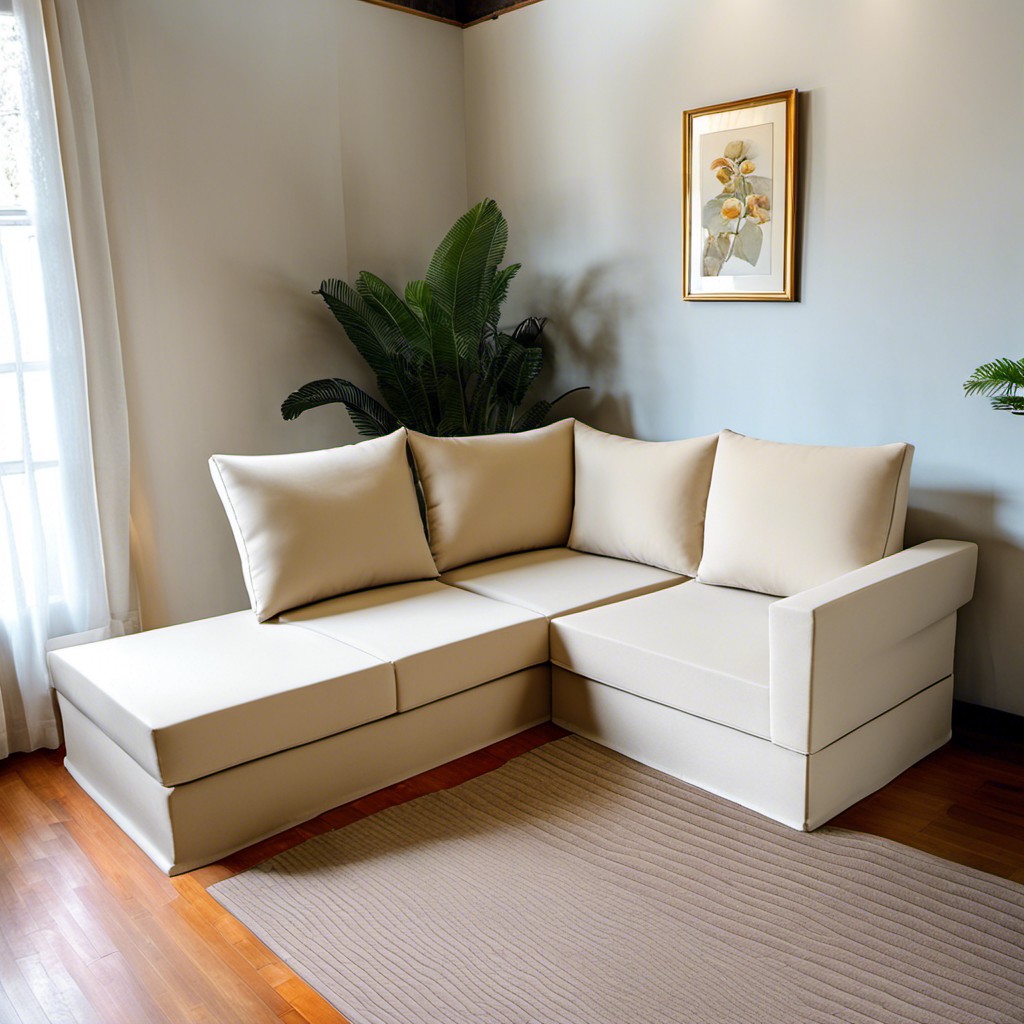
Switching to high-quality foam can offer a significant improvement in comfort and support. Opt for a high-density variation, which is sturdier and more enduring, thereby providing longevity to the sofa’s function. This foam will return to its original shape after use, eradicating the worry of permanent depressions.
Additionally, it’s essential to ensure the foam is cut to match the dimensions of the seat, ensuring a snug fit and smooth appearance. Lastly, some foams come with a Dacron wrap, a thin polyester layer that boosts the foam’s look and feel. For an added touch, consider paying a bit extra for this feature as it gives cushions a more rounded and inviting look.
Stitching Additional Fabric Support
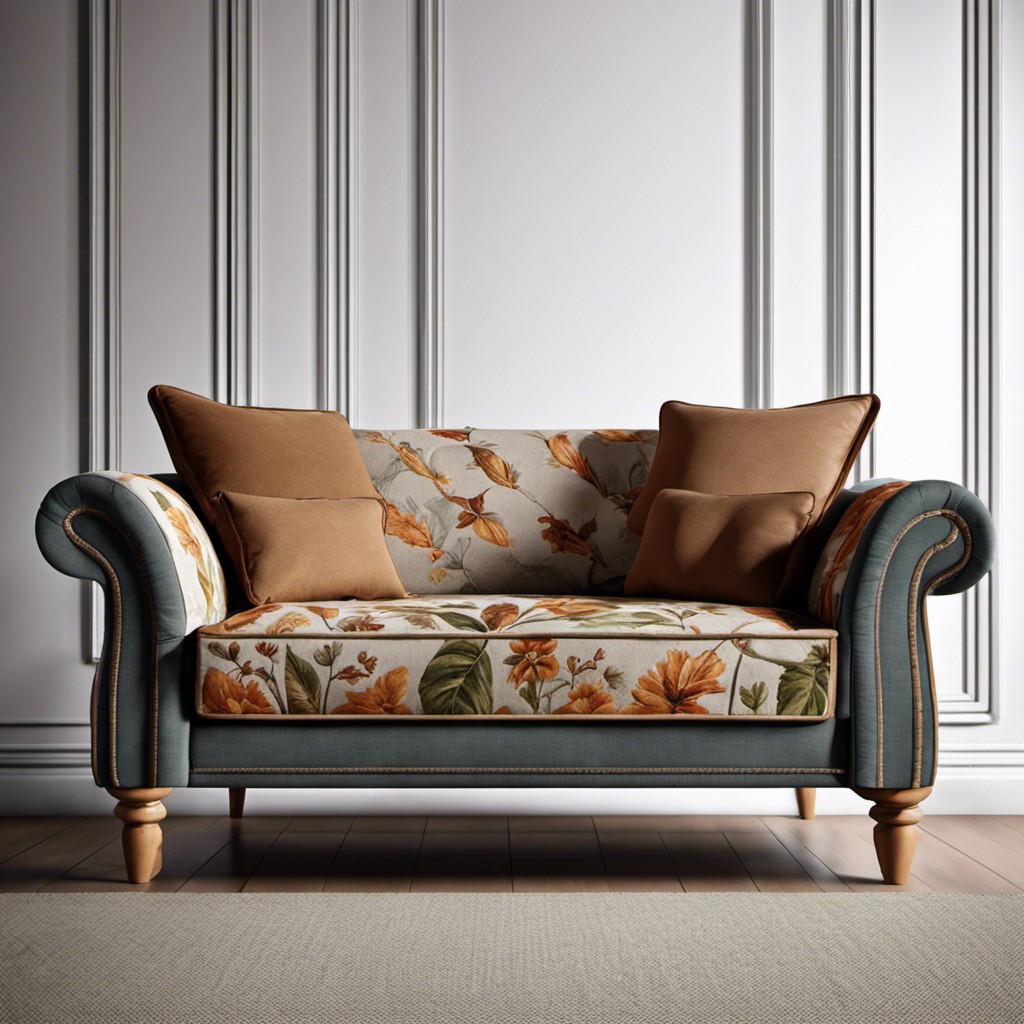
Creating additional fabric support involves reinforcing the existing framework of your sofa seat. Using strong, durable materials like linen or cotton blend, you’ll want to reinforce the key areas that handle the most stress. Start by identifying these areas, often located where the cushion seams meet.
You’ll need an upholstery needle and strong thread that matches the color of your sofa. Reinforce this area with stitches, creating a consistency that can handle increased weight and movement overtime.
Adding this extra fabric support is an economical method of extending your sofa’s lifespan and preventing sagging. Additionally, it can greatly enhance comfort by evenly distributing weight while sitting.
Always remember, precision in stitching will result in a stronger, more resilient sofa seat. This method can be done even by amateur needle-workers, as the goal is reinforcement, not visual appeal. With practice and patience, your sofa support will improve significantly.
Using Inflatable Sofa Savers

Inflatable sofa savers are ingenious devices that breathe new life into your sagging couch. Designed from durable PVC material, they can be inflated to the desired firmness level, providing customizable comfort. Simple to install, they go directly under the cushioning, instantly restoring original sofa contours.
An attractive feature of these nifty enhancers is their portability and ease of storage, as they can be deflated when not in use. Also, being independent of the seating area, they are appropriate for any number of seats. So, whether you have two, three, or more seating areas, this innovating solution will work.
For optimal performance, it is paramount to adjust the air level according to individual comfort needs. Regular checks need to be conducted to ensure there is no air leakage over time. This way, you ensure a robust long-lasting solution to a common issue, adding coziness and longevity to your beloved furniture.
Strengthening With Metal Spring Replacements
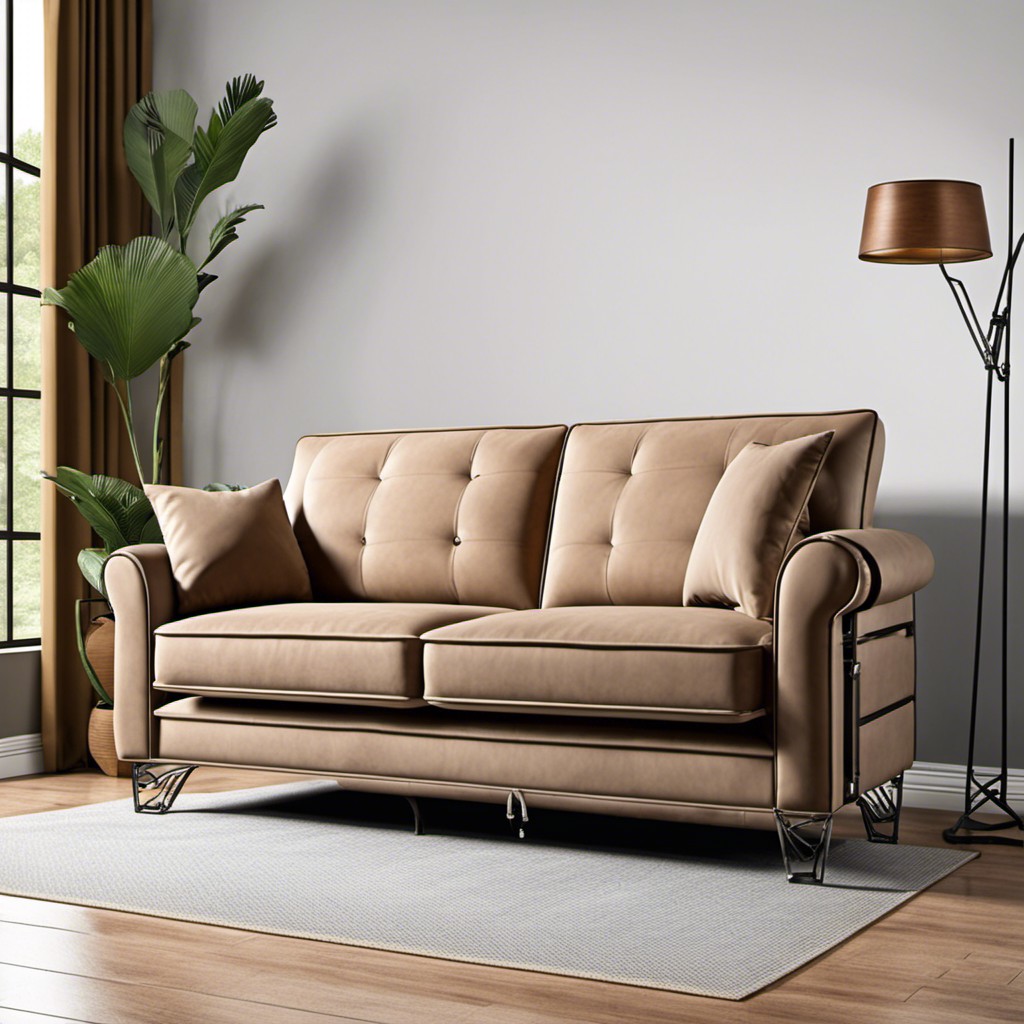
Swapping out worn-out springs can offer a significant boost in seat support. Metal springs, significantly sinuous springs, can effectively combat sagging issues. Such springs are designed with a continuous, “S” shape that provides consistent, sturdy support across the area of the sofa.
1. Gather essential tools: Before you begin, ensure you have a staple remover, new springs, and a stapling gun.
2. Locate and remove old springs: With a staple remover, carefully extract old springs. Handle with care to avoid causing further damage to the sofa structure.
3. Match and purchase new springs: It is crucial to find springs that match the original type and size. Doing so ensures an optimal fit and maximum support.
4. Install new springs: Use your stapling gun to secure the new springs in place, ensuring even distribution for consistent support.
5. Test the support: After installing the new springs, sit on the sofa to evaluate the upgraded support. Make any necessary adjustments for maximum comfort.
Remember that while replacing springs may initially seem daunting, patience and proper tools can transform your sagging couch into a revitalized, comfortable seat.
Inserting a Robust Wooden Board

Selecting a hardy variety of wood, such as oak or birch, provides a sturdy base for your sofa.
Measuring the interior of the sofa beneath the cushions ensures an appropriate fit. Make sure the board is slightly smaller than your measurements to fit neatly under the cushions, yet large enough to cover the seating area.
Typically, a thickness of half an inch to one inch offers an ideal blend of durability without compromising comfort.
For easier installation and removal, consider padding one side of the board with thin foam or fabric, which also increases the level of comfort.
Remember to routinely clean the wooden board, keeping it free from dust and pests.
Also, exert caution when sitting down; throwing yourself onto the sofa might break the wood or damage the sofa frame.
Over time, the added support from the wooden board can significantly enhance the longevity and function of your sofa.
Restuffing the Pillows of the Sofa Seat
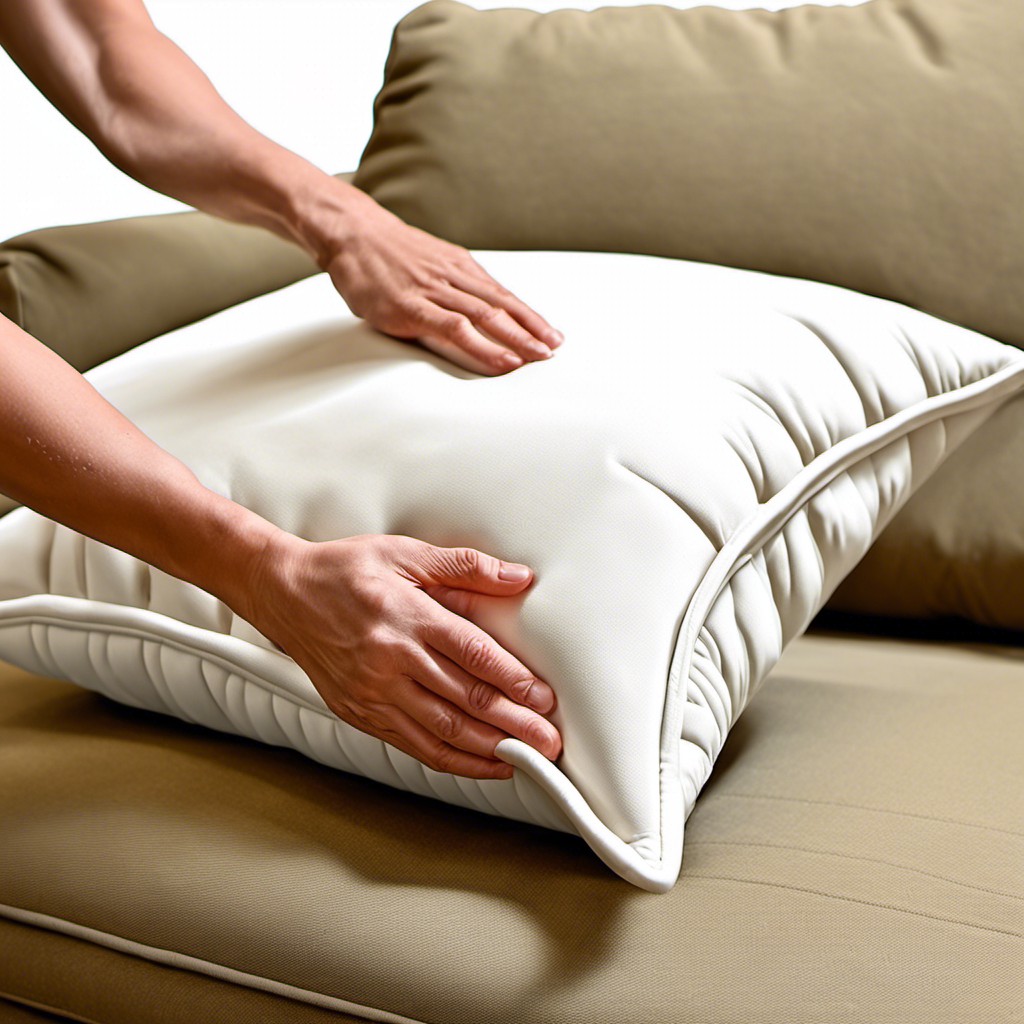
To breathe new life into a sagging sofa, restuffing can be essential, providing both comfort and improved aesthetics. Begin by carefully removing the existing stuffing from the cushion casings. Pay close attention as you may reuse some stuffing material, saving unnecessary waste and cost.
Enlisting high-quality foam or polyester fiberfill can significantly enhance the feel and appearance of the seats. This tried-and-tested advice is frequented by decorators, primarily because it maintains the form and structure over time. Foam provides a firm base while fiberfill adds a layer of softness and pliability for added comfort.
When restuffing, ensure the corners are sufficiently filled to prevent the cushions from appearing under-stuffed and thereby lacking support. Once done, zip or sew the cushion casing back up.
Remember, neatness matters, so take your time to smoothen out any lumps and bumps for an even finish. For sofa seats with removable covers, restuffing can be done without professional aid, offering an efficient and economic method to refresh your sofa.
Implementing Foldable Support Slats
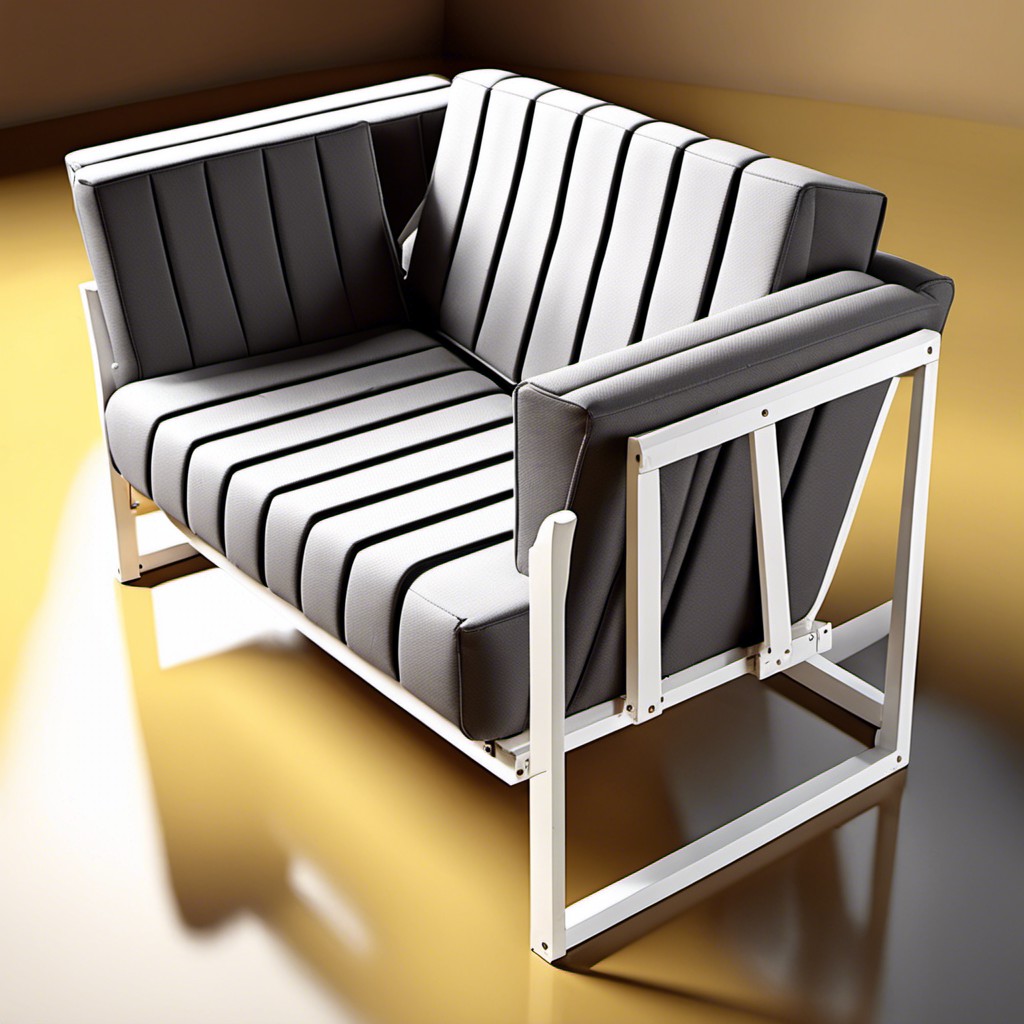
Understanding how to employ foldable support slats is fairly simple. These slats, typically made of robust materials like wood or metal, act as reinforcements for your sofa’s weary cushions. They offer an elevated level of support compared to other options due to their inherent rigidity coupled with a foldable design.
Implementation is generally a straightforward process. First, make sure to measure your sofa accurately to get slats that perfectly fit your couch. Next, slip the slats in between the couch frame and the cushions. They distribute the weight more evenly, preventing any single spot from sagging. Furthermore, their foldable nature means they can easily adapt to any shape and size of sofas and save storage space when they are not in use. It’s also essential to rotate and move them around every once in a while to ensure even usage over time.
Therefore, foldable support slats can be a cost-effective and efficient solution to enhance the lifespan of your sofa while maintaining its comfort and appearance. Remember, their success greatly depends on regular adjustments and proper fitting. High-quality slats are usually more durable and effective, so they might be worth the extra investment.
Encasing in Furniture Protector Slipcovers

Initiated as a means to protect furniture from daily wear and tear, slipcovers have evolved into a tool for enhancing sofa seat support. They provide a snug fit around your furniture, distributing body weight evenly to alleviate undue stress on any one area.
1. Material Matters: Opt for heavy-duty fabric like denim or canvas, well suited to withstand constant use.
2. Correct Fit: Tailored slipcovers offer better support compared to loose or ill-fitting ones.
3. Padding Addition: Some slipcovers come with inbuilt padding, offering an extra layer of support and comfort.
4. Regular Rotation: Periodically change slipcovers. Besides ensuring even wear, it exposes the underlying structure to air, preventing moisture buildup, which can affect support over time.
5. Seamless Aesthetics: They come in diverse colors and designs, enabling you to enhance seat support without losing out on aesthetics.
Remember, despite their multifunctionality, slipcovers cannot effect a significant improvement on severely sagging seats. They’re more of a preventative measure, helping maintain seat support over time.
Using Sagging Sofa Cushion Supports

Sagging sofa cushion supports offer an excellent solution to giving your tired couch a new life. These supports boast a fairly simple installation procedure. You just need to slip them beneath the sagging cushions to provide the necessary lift and firmness.
There’s a variety of cushion supports available on the market, accommodating different sofa sizes and cushion numbers. One can choose between thick PVC designs, sturdy steel constructions, or more budget-friendly slat designs.
The beauty of this solution lies in its flexibility and versatility. You can easily adjust the positioning of the supports to specifically target sagging areas. Plus these can be removed when not needed.
Maintenance is also a breeze. With most cushion supports being resistant to liquid spills, a wipe down with a damp cloth is all it takes to keep them clean.
Remember to measure your sofa properly before making a purchase, as the effectiveness and comfort of these supports hinge significantly on a precise fit.
Just like that, within minutes, your saggy couch can regain its past glory, with cushion supports acting as a sturdy backbone to maintain comfort and shape.
Fixing Extra Strong Sofa Springs
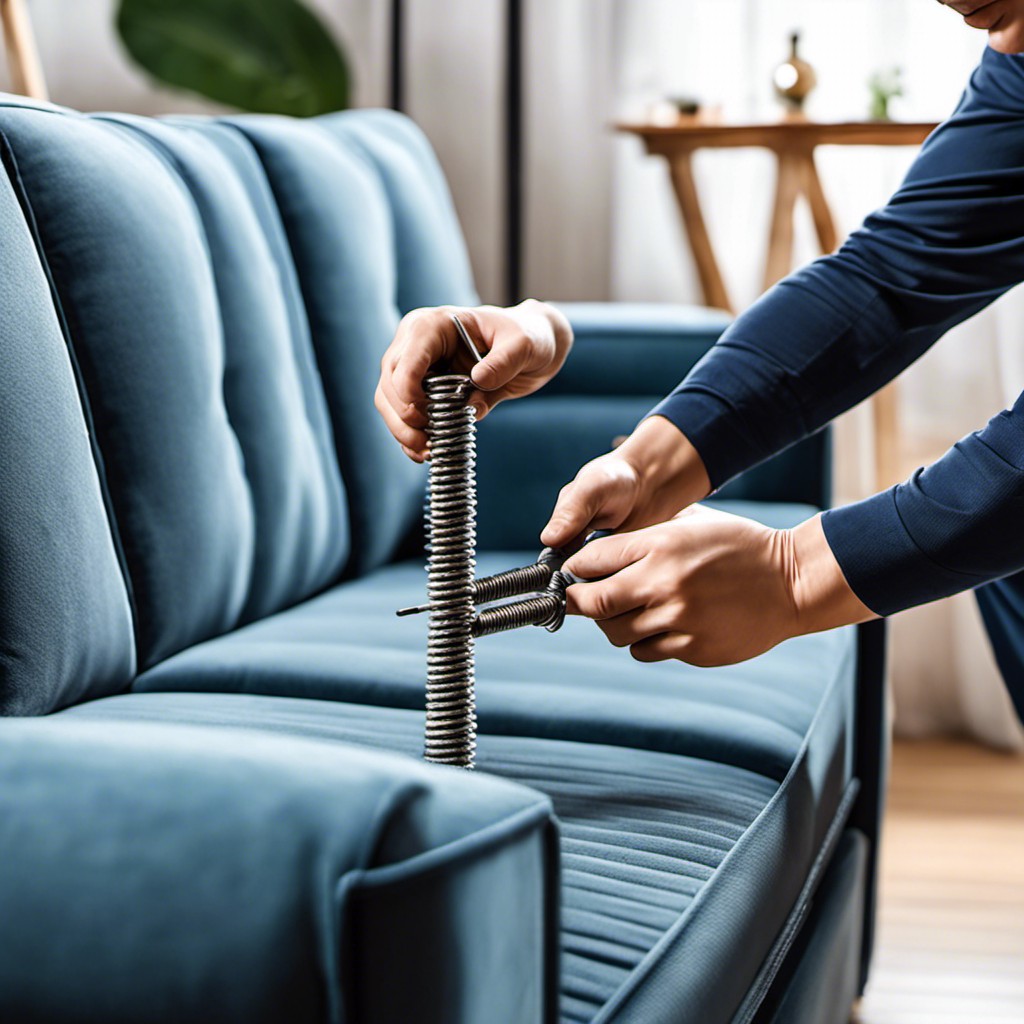
To enhance the lifespan and comfort of your couch, consider installing extra strong springs. Springs act as the backbone of your sofa, providing ample resistance while you sit or lie down.
- Different Spring Types: Sinuous springs, coil springs, or eight-way hand-tied springs are common types of strong springs. All have proven useful for various furniture needs.
Spring Installation: Carefully remove the old springs first before replacing them. Look for springs durable enough to withstand pressure and retain shape even after extensive use.
Tailored Solutions: Springs come in different tension levels. Extra hard springs provide firm support, while medium ones offer a more balanced feel. Choose according to your comfort preference and durability requirements.
Advantages: Extra strong sofa springs provide added structural integrity and comfort. Plus, they ensure the furniture maintains its shape over an extended period.
Remember, professional help may be essential if you’re not comfortable doing spring replacements yourself.
Adding in Strap and Buckle Sofa Savers
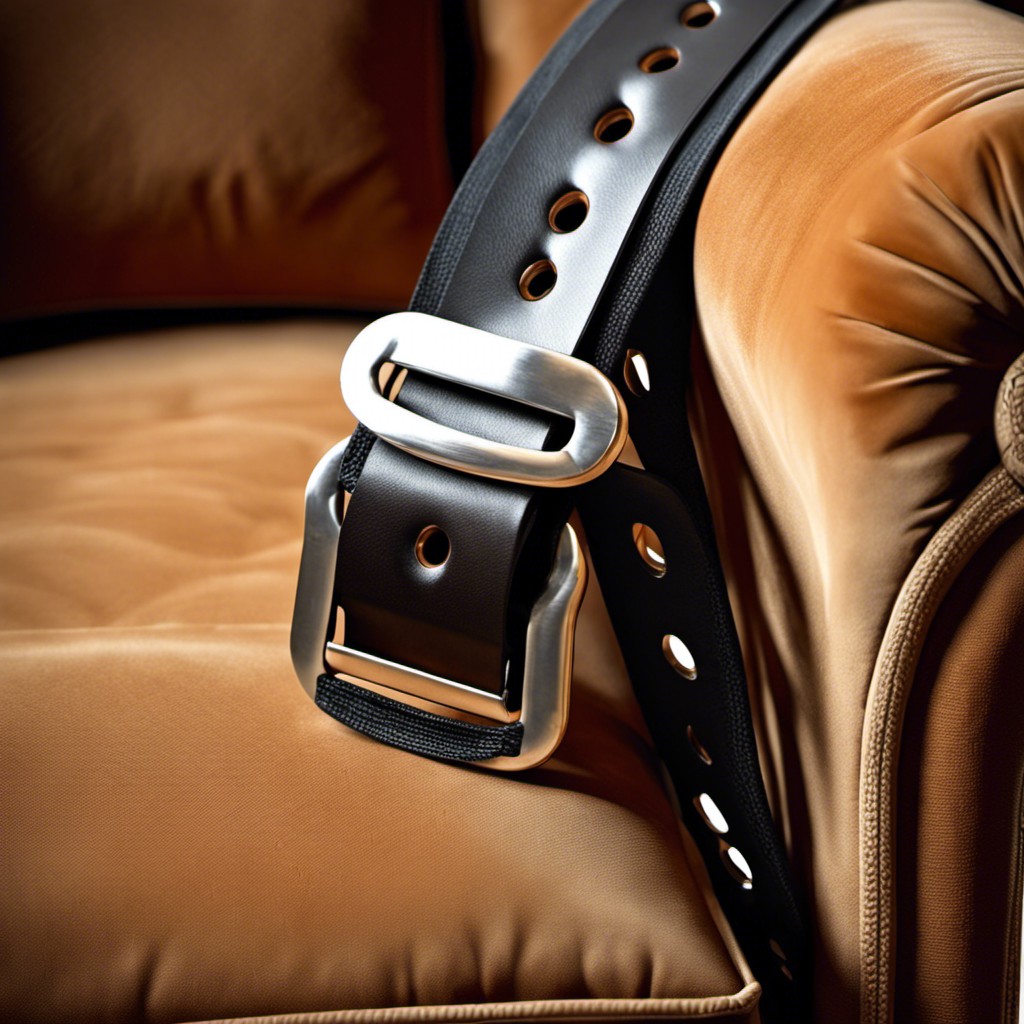
Moving on to the application of this sofa solutions, it’s time to talk about strap and buckle sofa savers. One key feature about these tools is their versatility – they’re adjustable to fit different sizes of sofas, serving as a support for sagging cushions.
1. Straps and buckles are made from durable materials; hence they withstand constant usage without wearing out easily.
2. They involve simple installation processes – simply strap around the sofa, fasten the buckles, and voila! Your sofa is good as new.
3. These devices work across all fabric types. Whether you have a leather, suede, or cotton cover, they securely fasten without causing any damage.
Remember, it’s essential to measure the dimensions of your sofa accurately before purchasing, to ensure an ideal fit.
4. Besides cushion support, strap and buckle sofa savers can help fix sagging armrests or backs.
5. They are relatively invisible once installed, preserving the aesthetics of your sofa.
Using strap and buckle savers guarantees enhanced comfort while also extending your sofa’s lifespan.
Implementing Industrial-strength Sofa Supports

Industrial-strength supports serve as sturdy reinforcements for a worn-out sofa’s structure. Manufactured specially to carry heavy loads, these supports add an almost bedrock-like stability to lounge furniture.
Firstly, consider the quantity needed, often based on the size of the frames to be reinforced, typically three for an average-sized couch. These sturdy brackets are placed under the existing seating platform, bolstering the resilience against weight and wear.
Installation involves a few household tools and basic DIY knowledge but requires high caution. Exercise prudent judgement before deciding to install on your own, a professional’s assistance could make the task safer and guarantee superior results.
With their high weight-bearing capacity, these supports secure the filler material and prevent it from collapsing, extending the durability of your sofa. The tempered steel construction of such supports ensures rust-resistance, enhancing longevity. Coupled with their ability to withstand use and abuse, they remain almost invisible, melding seamlessly with the furniture’s design.
Remember, though well-constructed and beneficial, these supports can’t reverse severe damage. While enhancing the sofa’s structure and form, they may not guarantee absolute comfort. For that, incorporate other enhancements from the outlined methods, like adding more foam for softness, preserving the texture and bounce of the loved furniture.
Upgrading to Memory Foam

Shifting to memory foam offers an excellent remedy for sagging sofas. This unique type of foam is renowned for its ability to conform to the body’s shape, providing unbeatable comfort and support. The viscoelastic properties of memory foam allow it to bounce back to its original form after use, ensuring enduring cushion resilience.
Firstly, measure your sofa’s existing cushions. They’ll guide you on the size of memory foam needed. Second, purchase high-density memory foam of at least 4 to 5 inches thickness. This thickness gives the right balance between comfort and support.
Another consideration is the durability. Opt for memory foam with a longer lifespan to withstand frequent use. Finally, consider engaging a professional for the upgrade. This ensures proper installation and maximum comfort optimization. Remember, whilst costlier than other options, the benefits of memory foam make it a worthwhile investment for your sofa’s extended longevity.
Stitching Integrated Pocket Coil Springs
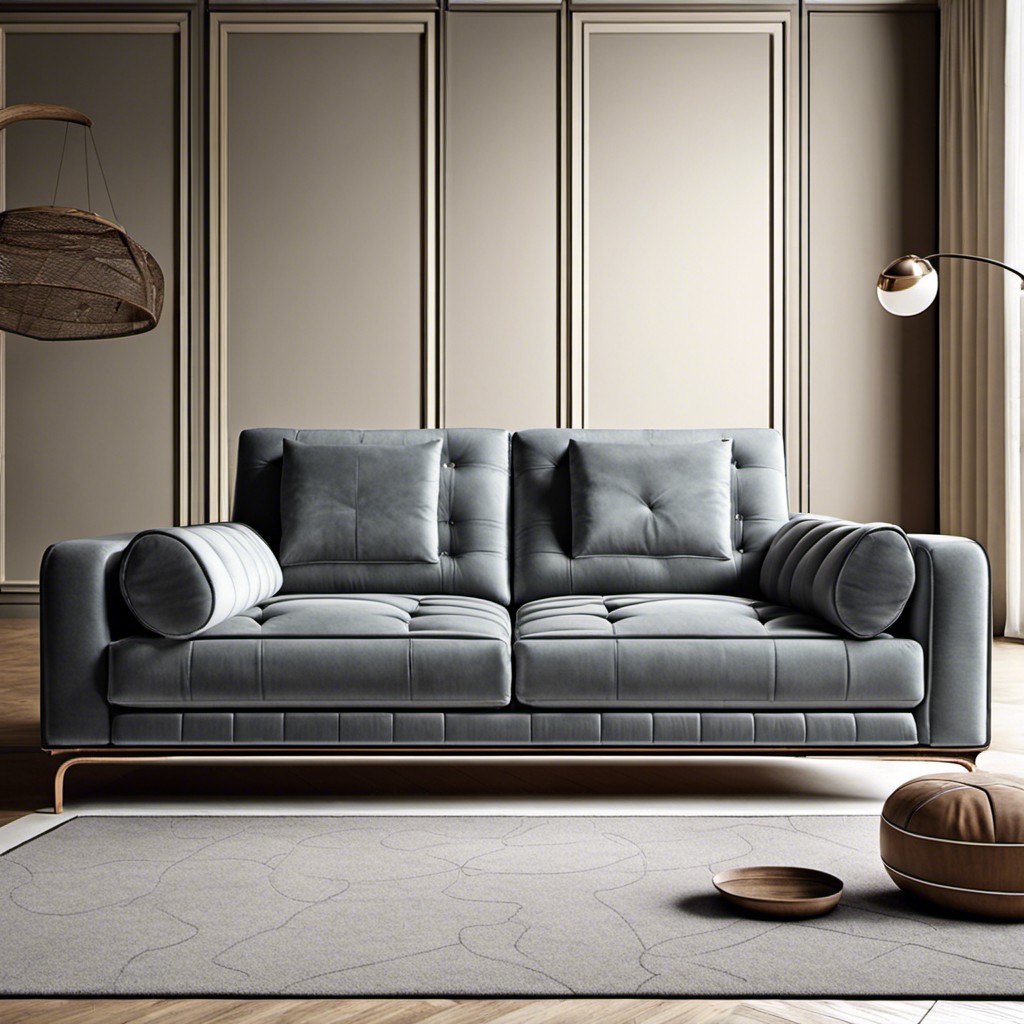
Each pocket coil spring is a self-contained unit, providing personalized contouring to the body’s shape. This contributes to a sofa’s overall comfort and durability.
1. Improved Comfort: The independent nature of pocket coil springs offers superior comfort. Each spring responds individually to weight distribution, ensuring an even, comfy seating area.
2. Durability: Made of high-tension steel, they are capable of withstanding substantial force, making the sofa last for a considerable time.
3. Noiseless: Springs stitched into individual pockets of fabric guarantee smooth, noise-free seating experience.
4. Bounce Back: Pocket springs possess an innate ability to regain their original shape, preventing sagging.
5. Easy to Replace: If some springs wear out, they can be replaced individually, eliminating the need for a full redo.
However, perfect results require professional assistance. So, hiring an expert for the job is highly recommended.
Inserting a Polymesh Support Grid

Polymesh support grids are another viable option for boosting the lifespan of your beloved sofa. They are robust, durable, and weigh almost nothing, making them an excellent solution for sagging cushions.
Here’s how they can be an ideal addition to your upholstery improvement plan:
- Polymesh grids distribute weight evenly across the cushioning. This alleviates stress and tautness on specific sites, reducing overall sagging.
- The grids sustain their solid structure, which aids in retaining the sofa’s original shape despite prolonged use.
- The flexibility of polymesh enables it to adapt to the cushion’s shape, offering a fitting solution for custom-designed sofas and seats.
- Upkeep and maintenance of these support grids are minimal. They are removable and washable, ensuring cleanliness and hygiene.
- Installation is straightforward and doesn’t require technical expertise. This do-it-yourself method saves you from the cost of professional repair services.
- They are well-ventilated, keeping your sofa’s base from collecting unnecessary moisture, thus extending its lifespan.
Ensuring Regular Sofa Maintenance
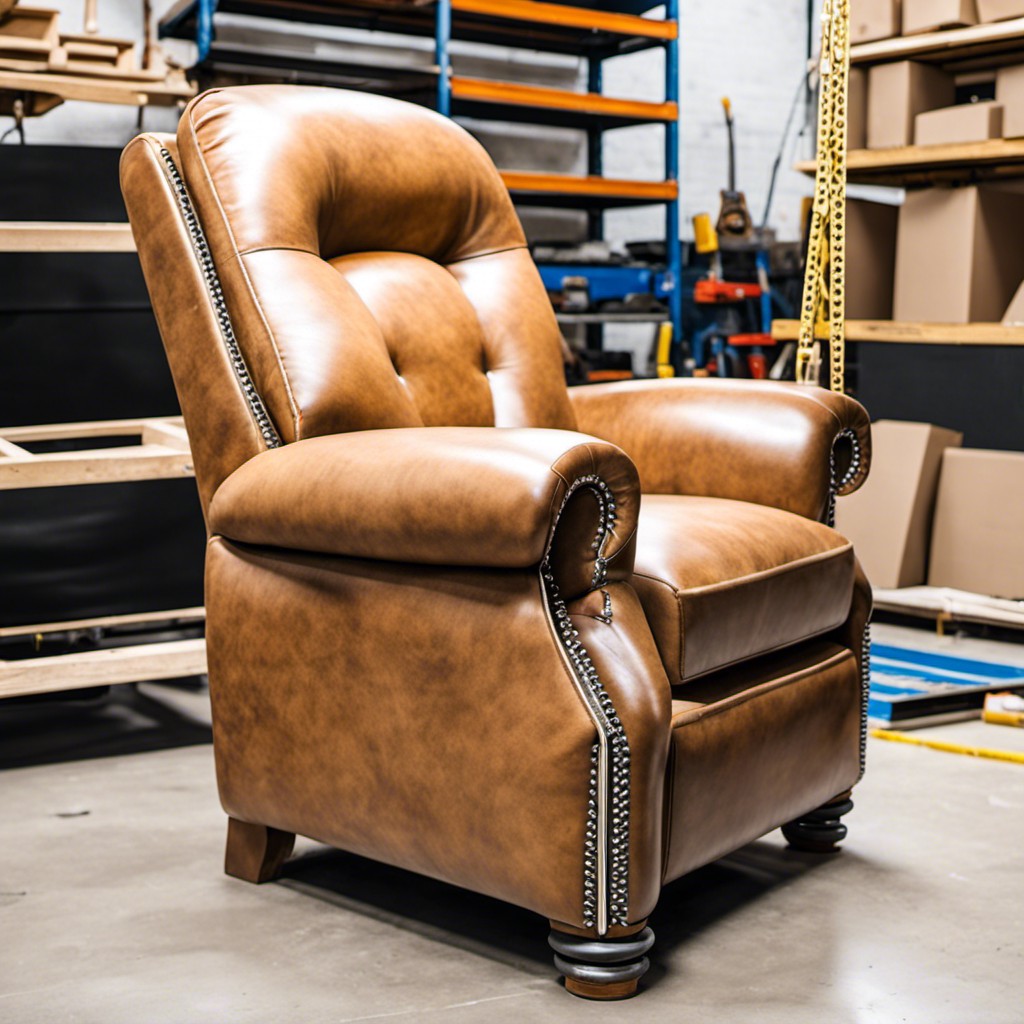
Adhering to a habitual cleaning routine keeps the grime and dust off the surface, preventing unwanted wear and tear. Brushing it weekly removes dust debris, while spot cleaning spills as soon as they occur prevents long-term stains.
Fluff and rotate cushions frequently to maintain their shape and comfort. Every six months, lift the sofa to vacuum underneath and check for any potential structural issues. To maintain the frame structure, reduce jumping on the sofa or roughhouse play. Indeed, it’s about preventing problems before they occur!
A well-maintained sofa not only offers robustness but also retains its aesthetic appeal for a longer period.
Applying Frequent Cushion Fluffing
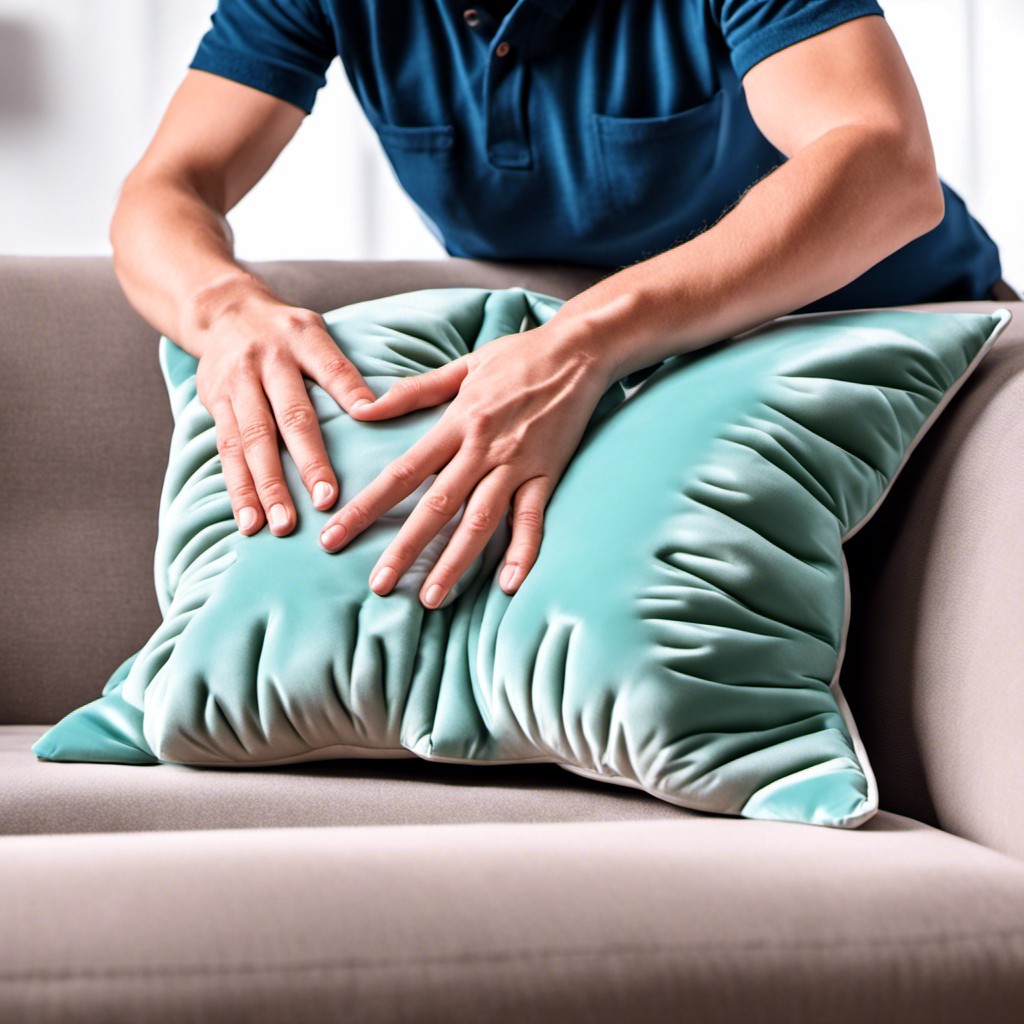
This approach is simple yet effective. Cushions, overtime, tend to flatten due to the weight they constantly bear, which leads to unsightly deformations and an uncomfortable seating experience. However, periodic fluffing can prevent this.
To begin, remove the cushion cover, if possible. Then, grip diagonally opposite corners and push them towards each other in a clapping motion. This shocks the filling, spreading it evenly across the cushion.
Next, beat the edges lightly. It helps in distributing the stuffing evenly, ensuring uniform thickness.
Rotate and fluff the cushions regularly. In addition, swapping cushions from high-usage areas to lesser-used ones helps maintain uniform wear and tear.
Remember, the frequency of fluffing correlates directly to cushions’ longevity and comfort. Keep up with this simple maintenance tactic and enjoy a well-supportive, cozy sofa for years to come.
